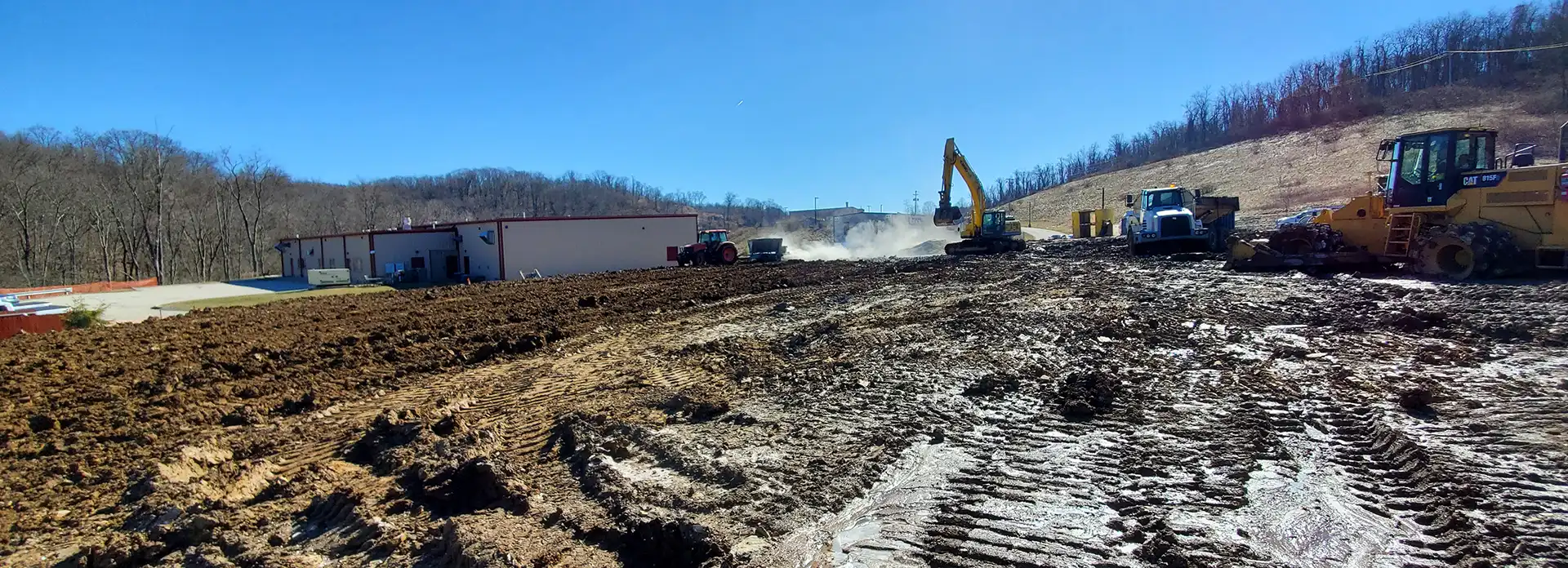Potential Pitfalls: Applying State DOT Standards to Small Commercial Projects

As a value engineering option, the importance of soil stabilization cannot be overstated. Soil stabilization lays the groundwork for stability, ensuring that structures remain steadfast against the test of time. Crucial to this process are soil stabilization specifications, which provide guidelines for preparing the ground for construction. While these specifications are indispensable for large-scale infrastructure projects, their direct application to smaller commercial ventures can create unintended challenges. With this in mind, let’s look at a few of the predominate sections found within a typical Department of Transportation (DOT) soil stabilization specification and highlight several items to be aware of.
Get back to work with less downtime.
Description
The description section is crucial for setting the stage for the expectations and requirements of the project, ensuring that all parties involved have a clear understanding of the work to be done, such as the project’s purpose. This section is the starting point for contractors to understand the nature of a project before delving into the more detailed specifications and requirements. For smaller commercial projects, it’s essential to ensure that the description accurately reflects the objectives and constraints unique to these endeavors. Flexibility in adapting the project description allows stakeholders to tailor soil stabilization specifications to suit the specific requirements of smaller projects, ultimately promoting efficiency and cost-effectiveness. This flexibility could be as simple as an adjusted timeline for testing, or allowing an accelerated acceptance criteria that better aligns with project goals of smaller jobs.
Materials and Equipment
Equipment requirements outlined in DOT specifications can significantly impact the feasibility and cost-effectiveness of soil stabilization methodologies for smaller projects. By optimizing equipment specifications to suit the scale and scope of smaller projects, stakeholders can minimize costs and improve efficiency. Exploring equipment that is more readily available and affordable for smaller projects can lead to innovative solutions and cost savings without compromising performance. For example, while a spreader truck and high-powered soil reclaimer should be specified for all highway work, often site constraints on smaller jobs may dictate the use of less sophisticated means, which could involve dumping and grading the material or mixing with more traditional construction equipment.
Application of Lime, Initial Mixing, Mellow and Final Mixing
Instructions for lime application and mixing outlined in DOT specifications may also benefit from being adapted for smaller projects. Otherwise, contractors may find it difficult to sequence their work in a manner that allows them to limit downtime. For instance, when DOT specifications mandate a 24-hour mellow period for lime stabilization, contractors may encounter difficulties in maintaining workflow efficiency, resulting in increased costs.
In such scenarios, contractors may be compelled to prioritize speed and profitability over the effectiveness of the stabilization method. This can lead to the adoption of alternative solutions, such as Portland cement, which offers shorter mellowing and setting times but may not provide the same level of soil improvement as lime stabilization on a particular soil.
When mixed effectively using a soil reclaimer with adequate water for hydration, quicklime can fully mellow in 4 hours or less in most low to moderately plastic soils, rather than the standard 24-hour mellow period. Adjustment considerations for the rate of application, depth of mixing, and time allowed for mellowing can be tailored to suit the specific requirements of smaller commercial projects, ensuring optimal results while reducing costs.
Protection, Curing and Maintenance
Curing and other quality control procedures outlined in DOT specifications are essential for ensuring the long-term durability of soil stabilization. For example, it is even more impactful on smaller jobs that the specification allows for a proof roll or similar method to be used to expedite the cure period once adequate soil strength is confirmed. This approach offers a practical solution for accelerating the curing process while ensuring that the soil stabilization meets the required performance standards. By incorporating flexibility into the specification to accommodate alternative curing methods, stakeholders can further enhance efficiency and cost-effectiveness in smaller commercial projects.
In conclusion, the challenges associated with applying soil stabilization methodologies from DOT specifications to smaller commercial projects underscore the need for careful consideration and strategic decision-making. Contractors must weigh the trade-offs between efficiency, profitability, and long-term durability when selecting methodologies and sequencing work. By addressing these challenges proactively and adopting tailored approaches to soil stabilization, stakeholders can navigate the complexities of smaller commercial projects with confidence and ensure the success of their endeavors.
No matter the size of your project, Mintek Resources is committed to providing the best solution for your project. Contact our team of technical experts for assistance in choosing the right product at 937-431-0218 or submit a contact form. We look forward to working with you.
We're here to help you find the best solution for your next project. Let's get started. Give me a call at 937-641-9901.

Josh Weser
Mintek Resources
Related Posts
Ground Control: Comparing Lime and Geosynthetics for Long-Lasting Stability
When building infrastructure on weak in-situ soils, a well-designed foundation is essential to ensure long-term resilience. Whether you're constructing roads, embankments, or industrial platforms, ensuring subgrade stability is critical—not just for performance, but...
Save Time and Money with Mintek’s Lime Stabilization Calculator
Lime stabilization turns challenging soils into durable foundations suitable for the construction industry. When lime-based reagents interact with soil, a chemical process alters its characteristics - binding clay particles, reducing plasticity & shrink-swell...
Exploring The Application of Lime Stabilization in Soil
Creating a stable foundation is essential for any construction project, yet many construction sites face challenges with unsuitable soil conditions. Lime soil stabilization offers a proven, cost-effective solution for transforming problematic soils into reliable...